Sitting under a shaded tree along JM Road, Mr. Joshi watches his grandson play with his dog. A smile lights up his face as he sees his daughter push his wife on her wheelchair towards the pani puri vendor.
If we zoom out from this happy moment along JM Road in Pune, we can see how the entire neighbourhood has transformed into human-centric spaces. The memories of this space were, however, not the same a few years ago, as the area was riddled with concerns of road and personal safety.
These concerns still echo strongly in most Indian cities that have fallen prey to private motor vehicles. Between 2006 and 2016, the total number of registered motor vehicles in India grew at a rate of 9.9%. A clear reflection of the country’s burgeoning middle class and the ever increasing demand for transportation that fuels the growth of personal motor vehicle ownership. Now, in the same period, road fatalities also rose from 93,000 to 1.36 lakh.
In the melee that is Indian city roads, pedestrians and cyclists are the most vulnerable. In 2017, the number of pedestrians who succumbed to road accidents spiked to 20,500 and the number of cyclist deaths also witnessed a rise of 37%. In the same year, the central government allocated Rs 59,500 crores for building highways and roads, but the state of pavements and footpaths raises the question on the amount spent on them. While India’s vehicle count continues to be on the rise, growing at three to four times the rate of its urban population, the road space is limited and is still meant to serve all citizens equally. But does it?
Let’s revisit the arguments presented so far: India’s vehicle growth is higher than the urban population growth; road fatalities have increased, along with the deaths of pedestrian and cyclists; transport funding is still car-centric rather than focusing on keeping vulnerable users safe. So, are Indian city roads for all citizens? This very question became the crux of the Institute for Transportation and Development Policy (ITDP) India Programme’s efforts to help Indian cities realise the essence of streets for all. To restore the balance, which has long been in favour of vehicles, Indian cities need complete streets that are accessible and equal for all citizens, regardless of age, gender, ability and social status. The India Programme has dedicated an entire decade to working with multiple cities to understand the issues that plague the system. These observations and years of introspection have taken shape in the form of the Complete Streets Framework Toolkit.
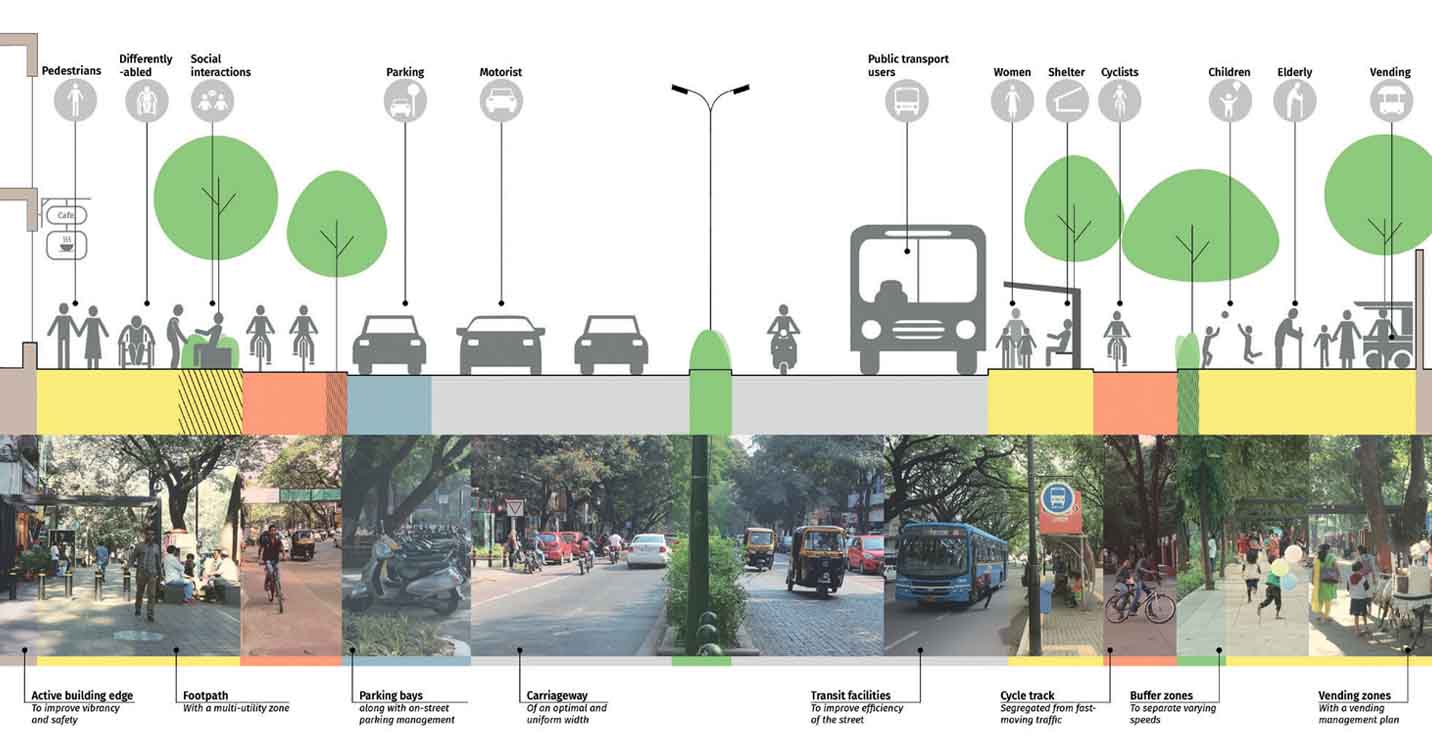
What the Complete Streets concept stands for
Complete Streets are streets with safe and continuous footpaths, segregated cycle tracks, safe pedestrian crossings, which offer refuge, uniform carriageway and organised on-street parking. These streets prioritise safety, convenience and comfort of all users regardless of their age, ability or mode of transportation.
By promoting walking and cycling or ‘non-motorised transport’ (NMT), complete streets help in achieving the sustainable goals of the city. Such high-quality streets make a city truly liveable and transform public spaces into community hubs where people can meet, interact, do business and have fun.
The Smart Cities Mission, a Ministry of Housing and Urban Affair (MoHUA) initiative, commissioned the ITDP India Programme to provide technical input for the preparation of a comprehensive Complete Streets Toolkit. The Toolkit will guide the selected 100 cities to prioritise walking, cycling and public transport over cars. As part of the capacity building framework for the National Urban Learning Platform, it offers Indian cities a chance to unlock the inherent potential of their street spaces.
By promoting walking and cycling or ‘nonmotorised transport’ (NMT), complete streets help in achieving the sustainable goals of the city
Beginning of the conversation
The state of Tamil Nadu has had one of the worst road fatality records in India. Even its capital, Chennai, has either led or been at the top-end of the list of Indian cities with high road fatalities. It was in the same city that the first conversation surrounding Complete Streets took shape.
In 2008, the team introduced city officials to the concept of complete streets. However, it took nearly five years of working with city officials to break the existing mindset that prioritised private motor vehicles over pedestrians. The construction of the first set of streets with footpaths began in 2013. By 2014, the city had formulated and adopted a progressive Non-Motorised Transport (NMT) Policy which aimed to support walking and cycling through legislation, funds and infrastructure. The city backed the mandate by allocating 60% of its transport budget to the cause. And since the concept of complete streets was a paradigm shift from the deep-seated, vehicle-centric urban development, capacity development had to be imparted to government officials of various levels and departments. As a result of these efforts, the city has laid out 100 kms of complete ctreets in various sections and work for the city-wide expansion is underway.
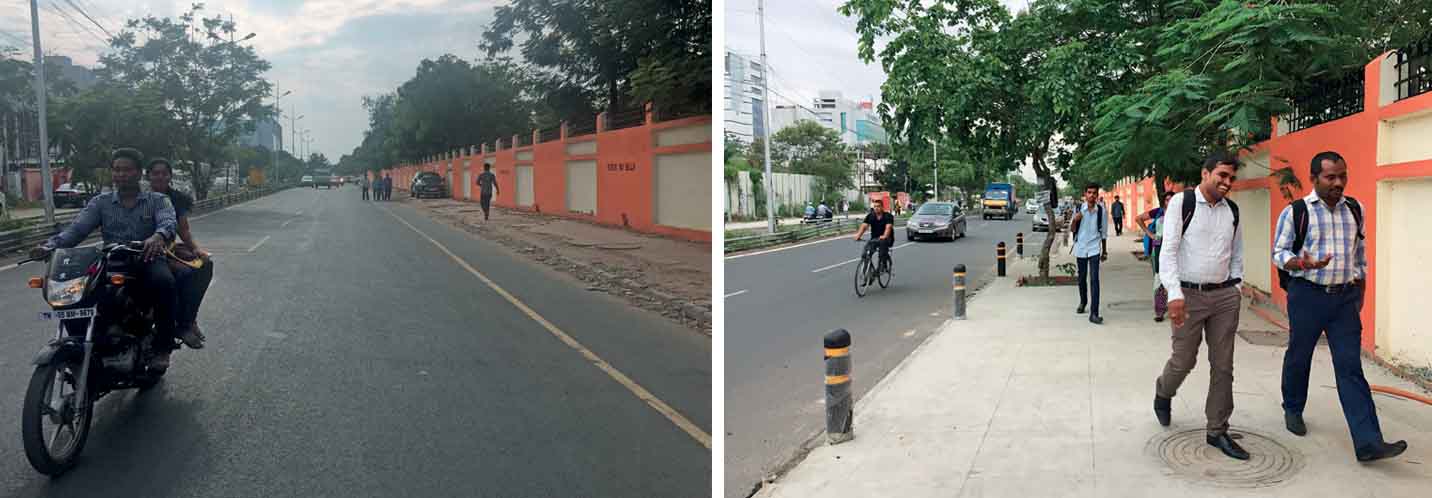
Right: CSIR Road, Chennai (After redesign)
The learning curve
Though Chennai responded to the call of sustainability and equality, the process of building streets for all citizens was arduous. This is purely because changing the perception and urban dynamics of cities is a tough nut to crack. Hence, along with the lapses came the silver lining. In this case, it was the virtue of experience.
The learnings identified from the project in Chennai were the need for capacity development of the government officials, lack of coordination among departments and hiring of experienced urban designers and planners to envision and create the finished product. When the team began its engagement with Pune, tackling these shortcomings was on the priority list.
To begin with, Pune adopted a unique set of Urban Street Design Guidelines (USDG), which is based on ITDP’s Better Streets, BetterCities manual, which clearly prioritises walking, cycling and public transport. The manual, in a simplified and ready-to-adopt format, highlights the elements of street design that cater to the needs of all road users. It is a stand against the implicitly assumed paradigm that ‘streets are for vehicles and vehicles only’.
Next, the city set up a dedicated Street Design Cell with professionals such as urban designers and urban planners. The agency was entrusted to oversee general maintenance of streets and work done by design consultants and contractors, in addition to designing neighbourhood streets. Under the cell’s purview, Pune has created hundreds of kilometres of complete streets. Most notable of them are JM Road and DP Road, which have won national acclaim and accolades from international quarters.
These were key milestones in helping the city turn to an alternative source of mobility, which was sustainable and inclusive of every citizen’s needs. It also proved to be the catalyst that led Pune to allocate over half of its transport budget for the Complete Streets initiative.
A move made well before the progressive Smart City Mission mandate.
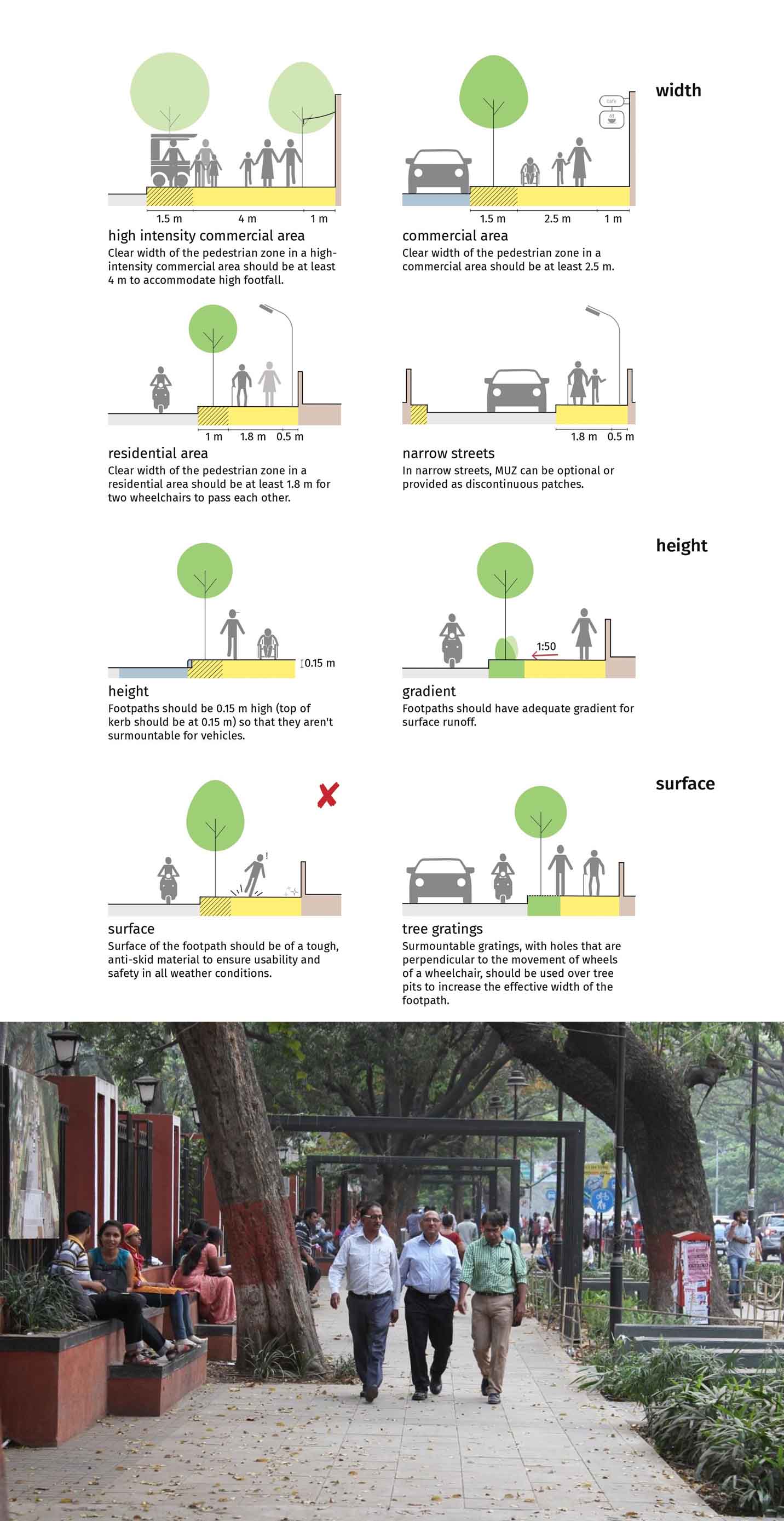 Bottom: The redesign of JM Road in Pune has set world-class standards of streets for people in India |
Complete Streets for Smart Cities
Established in 2015, the Smart City Mission aimed to develop cities that provide core infrastructure and ensure a decent quality of life to its citizens. The selected cities were expected to pursue clean and sustainable alternatives, as well as the application of ‘Smart’ solutions. One of the key benchmarks to adjudge the proficiency of these cities was efficient urban mobility and public transport. And the Complete Streets initiative was recognised as a key component of this criterion.
The concepts proposed by the selected cities were examined by various technical experts, including the ITDP India Programme. These concept notes were to inculcate the value of sustainable transport and create systems that ensured sustainability, accessibility and equity. Features which are intrinsic to complete streets. In the course of the sessions, it was recognised that most tier-II cities were apprehensive about implementing the full scale of the Complete Streets project, due to the lack of a holistic understanding of what complete streets were and what change they could bring. Most cities were also working in this field for the first time and lacked sufficient expertise.
In order to revive walking and cycling, the top 100 cities need to redesign over 40,000 km of city streets
This concern was borne out of two issues, one of which was systemic and the other entrenched in a false notion. Firstly, the standards established on the national level focused largely on the needs and composition of megacities. Hence, alienating tier-II cities from even considering the initiative or being wary of its suitability to their ‘narrow roads’. Second, and most importantly for tier-II cities, the urban utopia was defined by the scale of road projects they pursued. That is, the number of flyovers, road expansions to serve more cars, underpasses, etc. It was perceptible that this (false) sense of urban grandeur was derived from the precedence set by tier-I Indian cities.
Apart from these two key takeaways, these interactions also highlighted the need for coordination among various municipal and civic departments. This was not just vital for the Complete Streets project, but also pertinent to the Smart City initiative itself. The Toolkit was thus framed keeping in mind these gaps and how they could be addressed.
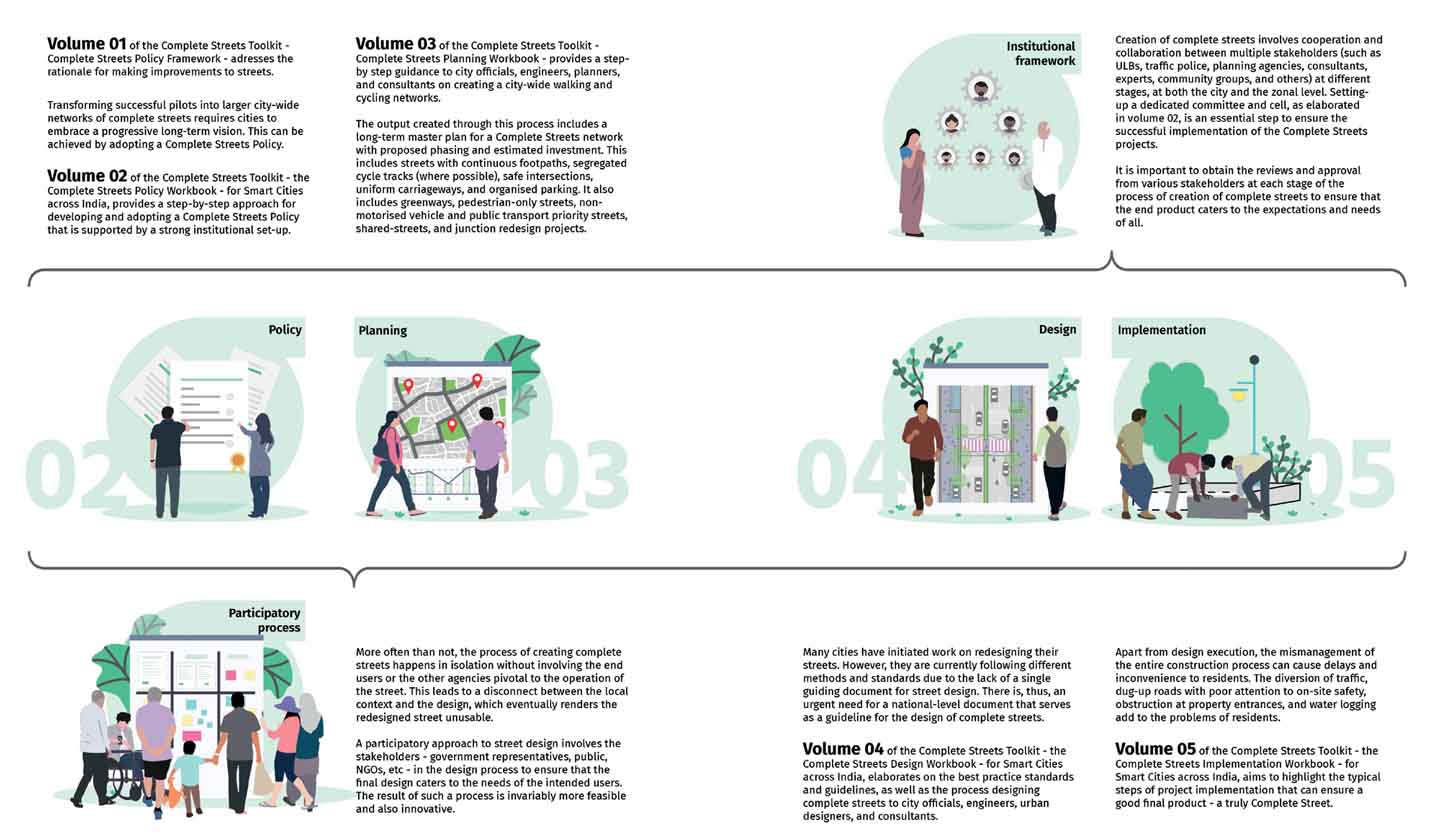 |
Shifting the paradigm
In order to revive walking and cycling, the top 100 cities need to redesign over 40,000 km of city streets into complete streets by 2030. The seven-part Complete Streets Toolkit, developed by the ITDP India Programme, was created to debunk perceptions and overcome flaws that were rampant in the creation of Indian streets. It facilitates cities to create streets, which consider the need of 48% of road users, who either walk or cycle.
“A street encroached by cars where you wade through the traffic with your heart in your hand?
Or a vibrant space where you could jog through the evening and spend some quality time? What kind of space would you prefer? The Complete Streets Toolkit offers the opportunity for Indian cities to improve the lives of millions by creating streets for all users,” says Aswathy Dilip, Senior Manager, ITDP India Programme. The Toolkit includes:
1. Complete Street Policy Framework, 2. Complete Streets Policy Workbook, 3. Complete Streets Planning Workbook, 4. Complete Streets Design Workbook, 5. Complete Street Implementation Workbook, 6. Complete Streets Evaluation Metrics, 7. Complete Streets Best Practices.
- Laying the framework to overcome bias
The Toolkit begins with the various facets and usages of city streets while juxtaposing it with the present nature of car-centric development. The point is to enable decision-makers, city officials, engineers, planners and consultants to understand the bias while also establishing the rationale behind Complete Streets. The Policy Framework does this by emphasising the benefits of the approach, through various cases at the national and international level.
- Setting the vision for change
After showcasing some of the complete streets best practices, the Policy Workbook focuses on the formulation of a policy to set the vision. The various stages of policy framing, from envisioning and goal-setting to stakeholder engagement are discussed in detail, stressing the need for a robust institutional framework that facilitates collaboration. Clarity on the vision will help decision-makers, both state and city, to develop and adopt a Complete Street Policy, supported by a strong institutional set-up.
- Expanding the scope through citywide plans
This workbook aims at assisting cities in creating city-wide walking and cycling networks integrated with public transport. Since all public transport commuters begin and end their journey by foot or cycle, the impact of such network planning is far-reaching. This process aims at creating a masterplan for a Complete Streets network with proposed phasing and investment.
- Designing and executing as per best practices
While projects tend to look nice on paper, their effectiveness is judged by their implementation. In the case of Complete Streets, the high-quality implementation of footpaths and cycle tracks is the game-changer. This is exactly what the Design Workbook and Implementation Workbook were conceived to handle. The Design Workbook provides best-practice standards, guidelines and processes for designing complete streets by city officials, engineers, urban designers and consultants. The Implementation Workbook is more of a check-list for urban designers, municipal engineers and contractors on how to implement the various elements of complete streets — such as footpaths, cycle tracks, parking spaces, and the carriageway — in complex urban environments.
- Evaluating progress
It’s important that the city conducts periodic evaluations to ensure identification of areas for improvement to help realise its policy goals more efficiently. Continuous evaluation over the year enables the city to demonstrate their programme’s success or progress and communicate it in the public realm. The Evaluation Metrics detail key performance indicators for monitoring transformation.
- Lessons to learn and practices to adopt
Finally, a reference book that covers the challenges and learnings from complete streets case studies in multiple cities across India. The Best Practices covers various stages of making complete streets a reality, from policy to implementation.
A culmination of years of engagement with cities and observation of projects, the toolkit takes a very holistic approach in simplifying the elements of complete streets. In fact, the Toolkit provides a step-by-step breakdown of all the information involved in the process of Complete Streets. There are even document templates for elements such as a request for proposal (RFP), policy template, etc., that can help cities, of all tiers, customise their framework as per their requirements.
 |
Progress to date and way forward
Can cities really change for the betterment of their people? Yes, they can and some already have. Indian cities like Chennai were the early-movers and, in fact, the first in India to adopt a Non-Motorised Transport Policy. Even the transformation of streets in Pune is a testament to its belief in the Complete Streets principles.
The Complete Streets Toolkit will help sketch a streetscape with opportunities for the millions whose lives would significantly be improved – especially women, children and differently-abled people. Capacity development workshops aimed at the dissemination of the knowledge from the Toolkits will be conducted for the selected 100 cities this year. Released in February 2019, the Toolkit has, within months, motivated the state of Jharkhand to adopt a Complete Streets statewide policy and disseminate the guidelines to all cities in the state as well.
The ambitious Smart Cities Mission helped deliver the notion of prioritising pedestrians over motorised vehicles to selected cities as well as other aspiring hubs. While the Complete Streets project has become a yardstick to gauge the measure of a city, the Toolkit offers them a means to meet the measure. After all, it is people and their interactions with spaces that adds life to cities and not the cars.
All photographs: Kashmira Dubash and Aswathy Dilip

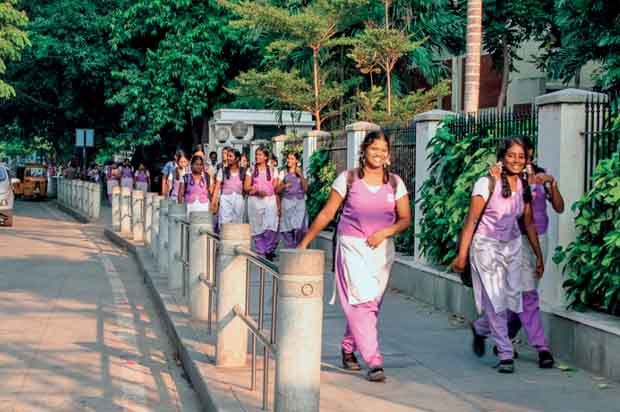

Comments (0)